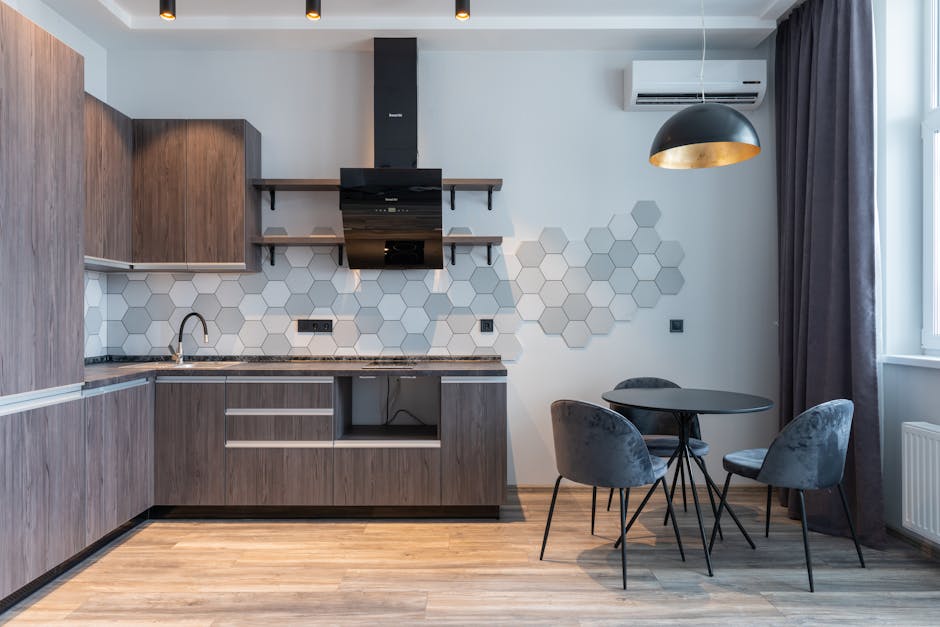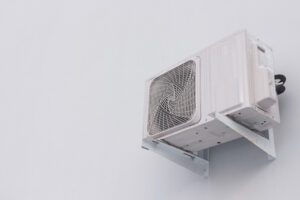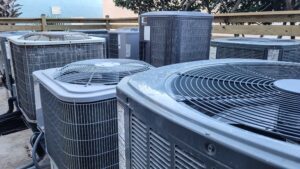Introduction to recognizing the need for a new AC installation
Knowing when it’s time for a new AC installation isn’t just about comfort; it’s also about efficiency and savings. First things first, if your AC is more than 10 years old, it’s probably using more power than it should. Then, there’s the constant repairs. If you find yourself calling the technician more often than calling your friends, it’s a sign. Notice your energy bills climbing? An inefficient AC could be the culprit. Also, keep an ear out. If your AC sounds like it’s struggling to keep up, making noises that could wake the neighbors, that’s a red flag. Lastly, uneven cooling in your home means your AC is losing its touch. Paying attention to these signals can save you from discomfort and high costs down the line.
Unusually high energy bills: The first sign of trouble
When your energy bills start to climb without any clear reason, it’s a red flag your AC might be struggling. Older or faulty air conditioners work harder to cool your home, chewing through more electricity in the process. This inefficiency is a major wallet drainer. If you’ve noticed a sudden spike in your energy costs, especially during the months you use your AC the most, it could be time to consider upgrading to a newer, more energy-efficient model. Modern air conditioners are designed to conserve energy and lower bills, making them a smart investment for your comfort and your pocketbook.
Inconsistent temperatures and poor airflow: A telltale sign
When your house feels more like a rollercoaster ride of hot and cold spots, it’s a clear signal something’s not right with your AC. Inconsistent temperatures across your rooms mean your AC’s struggling. It’s not just about comfort—it’s a warning. Same deal if you’re not feeling that blast of cold air or if it feels like you’re living in a weak breeze rather than a cool, refreshing gust. Poor airflow? That’s your AC waving a giant red flag. It’s either your unit is old, the filters are clogged, or the system’s just kaput. Don’t let it slide. Ignoring these signs is like sitting on a time bomb of future expensive repairs or, worse, a total breakdown in the middle of peak summer. Stay ahead. Act fast.
Frequent repairs and maintenance needs: When is enough, enough?
At some point, your AC starts acting more like a petulant child, always needing something. It’s a clear sign; when repairs become more of a routine than the exception, it’s time to think new. Imagine this: the repair guy might as well move in with how often he’s over. It’s not just about the inconvenience. Constant repairs are your hard-earned money dribbling away. If your AC needs fixing more than your car, ask yourself, “Is it worth it?” Break it down: If you’re calling for repairs multiple times a year, especially for big-ticket issues, the math isn’t in favor of sticking with the old unit. Frequent repairs also hint at a deeper truth – your AC is on its last legs. As much as it hurts the wallet, opting for a new installation could save you from the endless cycle of repairs, not to mention the peace of mind and comfort of a reliable AC.
The age of your AC system: Knowing when it’s time to retire
Most air conditioning systems wave the white flag around the 10 to 15-year mark. If your AC is in this age bracket or beyond, it’s time to start thinking about a new installation. Just like an old car, older AC units start to break down more frequently. You’ll notice you’re calling the repair guy more than your friends. This doesn’t just hit your wallet every visit; it also means your system’s best days are behind it. Plus, newer models are more energy efficient. Investing in a new AC could mean you’ll pay less on your energy bills. Age isn’t just a number when it comes to your AC. If your unit’s pushing or over that 15-year mark, give it a nod, thank it for its service, and let it retire.
Unusual noises and odors: Signs your AC is on its last leg
When your AC starts making weird sounds or smells off, it’s shouting for help. These aren’t typical quirks; they’re distress signals. Let’s break it down. A healthy, quietly humming AC is what you want. But if it starts rattling, buzzing, or making screeching noises, something’s not right. These sounds can mean loose parts, a dying compressor, or even electrical issues. Now, the smells. A fresh, unnoticed air is your AC working right. But a foul or musty odor? That’s a red flag. It could be mold in the ducts or a burnt-out wire insulation. These signs are your AC waving a white flag, pretty much saying it’s time for a new installation. Ignoring these could lead to bigger problems, and frankly, who needs that hassle? Better to check in with a pro and maybe start thinking about a new AC that won’t give you the runaround.
Conclusion: Making the decision for an AC installation
Deciding to invest in a new AC installation is not something to take lightly. But when your current system keeps letting you down despite frequent repairs, it might be time to say goodbye. Think of it this way: a new AC is not just an expense; it’s an investment in your comfort and peace of mind. Remember, an efficient AC can also save you money on energy bills in the long run. So, if you’re facing constant breakdowns, high energy bills, uneven cooling, or your AC is simply getting old (over 10 years), it’s probably time to consider getting a new one. The key is to weigh the immediate cost against the long-term benefits. A fresh installation could lead to fewer headaches, more consistent cooling, and potentially lower energy costs. After reading the signs, if most of them ring true for your situation, reaching out to a trusted HVAC professional for advice would be a wise next step. They can give you the lowdown on the latest models that could suit your home and provide you with a more comfortable, efficient, and cost-effective cooling solution.
Evaluating your options for a new AC system
Choosing a new AC system boils down to finding the right balance between cost, efficiency, and suitability for your home. Start by considering the size of your living space. A system too small won’t cool your home effectively, while one too big will cycle on and off too frequently, increasing your bills and wearing out the system. Next, look at energy efficiency. Systems with a higher SEER (Seasonal Energy Efficiency Ratio) rating may cost more upfront but can save you money on your energy bills in the long run. Also, think about the type of system that fits your needs. Central air conditioners are great for cooling multiple rooms, but if you’re only looking to cool a specific area, a split system or window unit might be more cost-effective. Finally, don’t forget to check for rebates and tax incentives. Many utility companies offer rebates for purchasing energy-efficient systems, and certain energy-efficient systems may qualify for federal tax credits, lowering your overall costs. Make sure you do your research and choose a reputable installer to get the most out of your investment.
The importance of professional installation
Trying to install a new AC yourself might seem like a good way to save some cash, but it’s a risky move. A professional knows what they’re doing. They can ensure your AC runs efficiently and safely. If installed wrong, your AC might not cool your place properly, or worse, it could be a safety hazard. Plus, many warranties require professional installation, so if something goes wrong, you won’t be out of pocket. Trust me, paying for professional installation is worth it for the peace of mind alone.
Maintenance tips for your new AC system to ensure longevity
Once you’ve installed a new AC system, taking good care of it can make it last longer and work better. Here are some straightforward steps to keep your AC in top shape. Clean or replace the air filter regularly – This is key. A dirty filter makes your AC work harder, which can lead to wear and tear. Aim to clean or replace the filter every 1-2 months, especially during heavy use. Keep the area around the unit clear – Make sure there’s at least 2 feet of space around your outdoor AC unit. This helps air flow and keeps the system cool. Schedule annual maintenance – Having a professional check your AC once a year can catch issues early and keep it running smoothly. Check your thermostat – Make sure it’s working properly and consider upgrading to a smart thermostat for better efficiency. Watch for unusual signs – If your AC is making strange noises, not cooling as it should, or if you notice higher than normal energy bills, it might need professional attention. Taking these steps can help you enjoy cool, comfortable air for years without the need for frequent repairs or early replacement.




